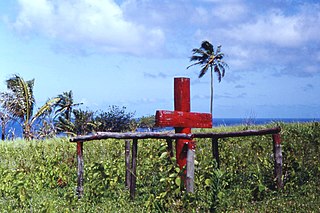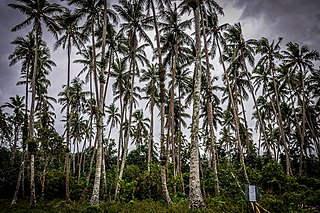
Cargo cult is an umbrella term to denote various spiritual and political movements that arose among indigenous Melanesians during the early-mid 20th century. The definition of cargo cult is vague, having been used for "almost any sort of organised, village-based social movement with religious and political aspirations" and "a variety of forms of social unrest that ethnographers elsewhere tagged millenarian, messianic, nativistic, vitalistic, revivalistic, or culture-contact or adjustment movements". The stereotypical "cargo cult" was organised around a central charismatic prophet, who convinced other individuals to engage in ritual acts like dancing, marching and flag raising in order to invoke ancestral spirits to bestow benefits upon the group. Although many accounts focus on the aquisition of Western material goods, the definition of "cargo" was broader than this, with many such movements focused on spiritual salvation, or were political expressions of a desire for autonomy. Many scholars see the movements as a reaction to the disruption to traditional ways of life caused by the colonisation of Melanesia during the late 19th century by Western powers and the resulting oppression and discrimination, as well as the contact between traditional gift giving and colonial capitalist economies.

Military ranks are a system of hierarchical relationships, within armed forces, police, intelligence agencies or other institutions organized along military lines. The military rank system defines dominance, authority, and responsibility in a military hierarchy. It incorporates the principles of exercising power and authority into the military chain of command—the succession of commanders superior to subordinates through which command is exercised. The military chain of command constructs an important component for organized collective action.
The chart below shows the current enlisted rank insignia of the United States Army, with seniority, and pay grade, increasing from right to left. The enlisted ranks of corporal (E-4) and higher are considered non-commissioned officers (NCOs). The rank of specialist is also in pay grade E-4, but does not hold non-commissioned officer status; it is common that a soldier may never hold the rank of corporal, and instead be promoted from specialist to sergeant, attaining junior NCO status at that time.
Police ranks are a system of hierarchical relationships in police organisations. The rank system defines authority and responsibility in a police organisation, and affects the culture within the police force. Usually, uniforms denote the bearer's rank by particular insignia affixed to the uniforms.

Pentecost Island is one of the 83 islands that make up the South Pacific nation of Vanuatu.
Superintendent (Supt) is a rank in the British police and in most English-speaking Commonwealth nations. In many Commonwealth countries, the full version is superintendent of police (SP). The rank is also used in most British Overseas Territories and in many former British colonies. In some countries, such as Italy, the rank of superintendent is a low rank.

The law of heraldic arms governs the "bearing of arms", that is, the possession, use or display of arms, also called coats of arms, coat armour or armorial bearings. Although it is believed that the original function of coats of arms was to enable knights to identify each other on the battlefield, they soon acquired wider, more decorative uses. They are still widely used today by countries, public and private institutions and by individuals. The earliest writer on the law of arms was Bartolus de Saxoferrato. The officials who administer these matters are called pursuivants, heralds, or kings of arms. The law of arms is part of the law in countries which regulate heraldry, although not part of common law in England and in countries whose laws derive from English law.
Specialist is a military rank in some countries' armed forces. Two branches of the United States Armed Forces use the rank. It is one of the four junior enlisted ranks in the United States Army, above private (PVT), private (PV2), and private first class and is equivalent in pay grade to corporal; in the United States Space Force, four grades of specialist comprise the four junior enlisted ranks below the rank of sergeant.

Ni-Vanuatu is a large group of closely related Melanesian ethnic groups native to the island country of Vanuatu. As such, Ni-Vanuatu are a mixed ethnolinguistic group with a shared ethnogenesis that speak a multitude of languages.

In the United States Armed Forces, the ranks of warrant officer are rated as officers above all non-commissioned officers, candidates, cadets, and midshipmen, but subordinate to the lowest officer grade of O‑1. This application differs from the Commonwealth of Nations and other militaries, where warrant officers are the most senior of the other ranks, equivalent to the U.S. Armed Forces grades of E‑8 and E‑9.
The Superintendent of Police (SP) is a rank in Indian police forces held by an officer who serves as the head of a police district primarily in rural areas. Other officers in SP rank may be appointed as the head of specialised wings, units or similar posts. In the commissionerate system in cities, an SP may be appointed as the Deputy Commissioner of Police (DCP) under the Commissioner of Police. Since the district magistrate is the administrative head of a district encompassing the police district, the SP reports directly to the district magistrate, who has general control and direction over police administration in the district. In the organisation, SP sends monthly reports to the Director General of Police (DGP) through the Inspector General of Police (IGP) and the Deputy Inspector General of Police (DIG).

The U.S. Army enlisted rank insignia that was used during World War II differs from the current system. The color scheme used for the insignia's chevron design was defined as golden olive drab chevrons on a dark blue-black wool background for wear on "winter" uniform dress coats and dress shirts or silvery-khaki chevrons on a dark blue-black cotton background for wear on the various types of field jackets and "winter" uniform fatigue shirts. An unauthorized variant that nevertheless saw wide use was olive drab chevrons on a khaki cotton background for wear on the "summer" uniform dress coats and dress shirts. This scheme of rank insignia was established by War Department Circular No. 303 on 5 August 1920 and would see two significant changes in 1942. The usage of this style of insignia was ended by Department of the Army Circular No. 202, dated 7 July 1948, which provided for significant changes in both rank and insignia design.

Gazetted officers include all the Indian Police Service officers which are Class I officers of the cadre and all State Police Services officers of and above the rank of Deputy Superintendent of Police. All are arranged in a hierarchical order.

Christianity is the largest religion in Vanuatu. Vanuatu is an archipelago made up of 13 larger islands, and approximately 70 smaller surrounding islands, each home to multitudes of diverse cultural and religious communities.

This article presents an overview of the culture of Vanuatu.

The Turaga nation is an indigenous movement based in northern Pentecost Island, Vanuatu. Its leader is Chief Viraleo Boborenvanua, and it has also been associated with Motarilavoa Hilda Lin̄i. The organisation has its headquarters in the traditional village of Lavatmanggemu on the north-east coast of Pentecost.

Avoiuli is a writing system used by the Turaga indigenous movement on Pentecost Island in Vanuatu. It was devised by Chief Viraleo Boborenvanua over a 14-year period, based on designs found in traditional sand drawings, and intended as a native alternative to the Latin alphabet. It is used mainly for writing in the area's native Raga language, although it can also be used for other languages including Apma, Bislama and English.
Detailed anthropological and sociological studies have been made about customs of patrilineal inheritance, where only male children can inherit. Some cultures also employ matrilineal succession, where property can only pass along the female line, most commonly going to the sister's sons of the decedent; but also, in some societies, from the mother to her daughters. Some ancient societies and most modern states employ egalitarian inheritance, without discrimination based on gender and/or birth order.











